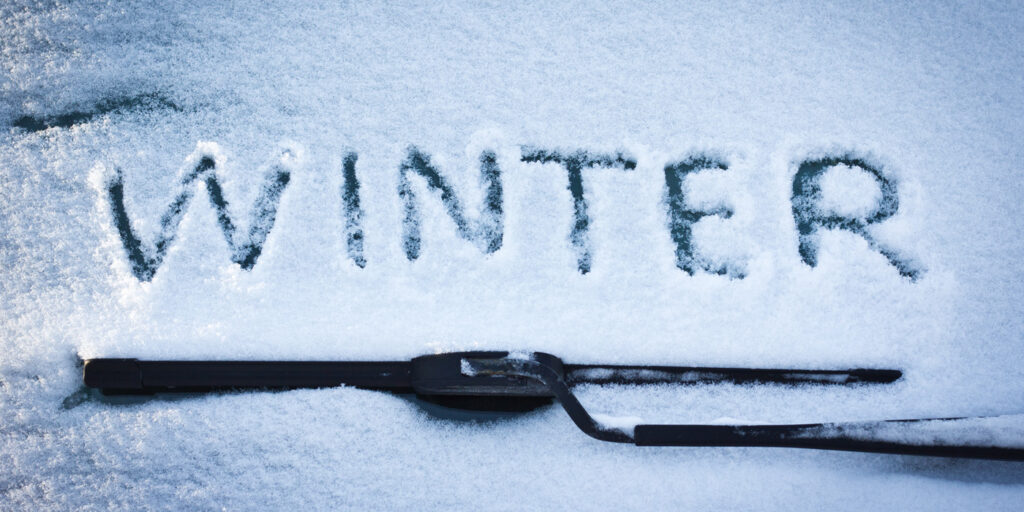Admittedly, windshield wipers aren’t the most glamorous component on a vehicle. For many drivers, they’re merely an afterthought – until they can barely see out their windshield. With winter weather approaching, however, this is an ideal time to talk to your customers about replacing their worn-out wiper blades before they become a serious safety hazard.
Signs of Wear
Most manufacturers recommend replacing wiper blades every six to 12 months. That’s all well and good, but the reality is that wipers are among the most overlooked maintenance items on a vehicle. If the rubber blade hasn’t completely disintegrated, chances are some of your customers will insist on keeping them until there’s a total failure. There’s an even greater chance your customers don’t even know when their wipers need to be replaced because they don’t know what to look for on the blade.
With the seasons changing, now is a great time to encourage your customers to inspect their wiper blades for signs of wear. Studies show that winter and summer can be especially harsh on wiper blades. With rain, snow and sleet pelting our windshields as we approach the end of the year, visibility behind the wheel is more likely to be top of mind for many drivers who otherwise ignore their wipers.
According to ANCO (part of the First Brands Group), motorists should look for these signs of wear. Some might be discoverable by physically examining the blades, while other problems will be more apparent when the windshield wipers are in use.
Streaking/smearing
Worn and dirty wiper blades are a major cause of streaking.
Skipping/chattering
If wiper blades go unused for a long period of time, they can develop a curvature that causes them to not make proper contact with the windshield. This can result in a skipping or chattering sound when they’re in use.
Splitting
Cold weather and freezing temperatures make the rubber hard and brittle, which can result in wiper blades splitting.
Squeaking
If there’s a buildup of dust, dirt or other debris on the windshield glass, the wipers won’t make a smooth pass and can make a squeaking sound.
“The remedies for fixing streaking/smearing, squeaking and skipping/chattering windshield wiper blades are the same: Keep your windshield clean and free of dirt, dust and debris,” ANCO explains on its website. “Avoid operating your wipers on a dry windshield. If the windshield isn’t wet enough when you run the wiper blades, it can cause skipping that creates squeaky wipers. Clean your wiper blades with washer solvent or water to help eliminate streaks and smears.”
If these remedies don’t address the problem, it’s probably time for new wiper blades.
The same goes for wiper blades that are starting to split. The split will only get worse and will lead to poor wiping performance when it matters most – while driving in rain, snow or ice.
The biggest mistake most vehicle owners make is replacing only one wiper (the bad one) instead of the pair. They think they’re saving money, but if one side is worn out, the other side isn’t far behind. Better to replace them both at the same time because both blades are needed to keep the entire windshield clear. Also, if they drive an SUV, minivan or hatchback, it’s a good idea to replace the wiper blade on the rear window while they’re at it.
Winter Survival Tips
ANCO offers a number of tips for keeping wiper blades in working order during the winter months. For example, some motorists who don’t have a garage will pull the blades up and away from the windshield when their vehicle is parked outside overnight. The idea is to prevent ice from building up on the blades and preventing the blades from sticking to the windshield. However, some people argue that this practice causes unnecessary wear and tear on the springs in the wiper arm.
A less controversial suggestion is to make sure the wipers are turned off when parking the vehicle. This way, when the vehicle starts up, the wipers won’t automatically start operating, which can potentially damage the wipers if the windshield is coated with snow and ice.
For motorists who are really passionate about protecting their wiper blades, they can cover them with tube socks when not in use, or wipe the blades with rubbing alcohol to prevent them from freezing to the windshield. And for goodness sake, use an ice scraper – not the windshield wipers – to clear ice and snow from the windshield. Sitting in the vehicle with the defroster on max while the wipers struggle to break through a thick layer of snow and/or ice is a recipe for damaging the wiper blades.













